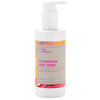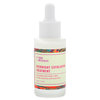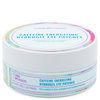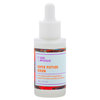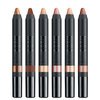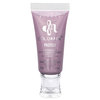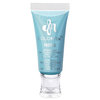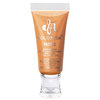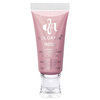
Many of us first learned of pheromones as early as high school science class. Oxford Dictionaries defines “pheromone” this way: “A chemical substance produced and released into the environment by an animal, especially a mammal or an insect, affecting the behavior or physiology of others of its species.” These days, more and more pheromone-infused fragrances and colognes are popping up on shelves—and often, they’re marketed with some big claims. In particular, such products are supposed to enhance the wearer’s sexual attractiveness. But is there any truth to this supposed aphrodisiac quality? We figured Valentine’s Day is the perfect time to take a closer look at pheromones.
While some experts claim that the naturally produced chemicals may enhance a person’s sexual attraction through sense of smell, others believe that human pheromones are practically nonexistent. One thing is certain: pheromones play a powerful role in the lives of non-human animals. Unlike hormones, which affect the body internally, pheromones work outside the body, affecting those nearby. Woah.
Science says our animal friends are rife with pheromones. In fact, every time a cat rubs against your leg, its covering you with potent pheromones found on its face. Same goes for a dog marking its place on trees and fire hydrants. Leaving a scent establishes ownership and familiarity. For believers in the power of pheromones, you may have done the same thing after spending the last three nights at your boyfriend’s or girlfriend’s house. Or maybe it wasn’t exactly pheromones you left on the pillow; maybe it was just the lingering smell of Pantene.
The thing about pheromones (and what makes them so hard to study) is that they don’t really have a scent, but they are often transported in bodily excretions that do. Sweat, tears, urine—these are all swimming with pheromones, but our natural negative reaction to these odors makes it difficult to say exactly what creates a positive reaction in some cases. It might have something to do with why a person seldom minds the bodily scents of his or her lover while the smell of someone unfamiliar can seem, well, gross!

According to most research, humans haven’t yet found a way to consciously send out pheromones as signals to attract mates. But, believe it or not, this “magical power” exists for animals and has been scientifically proven. And If a female animal (amphibians and insects included) can produce a mating pheromone to attract a partner, why can’t we? Well, studies have found that animals can pick up on pheromones through something called the VNO (Vomeronasal Organ), an organ in their nose that is attached to the behavioral part of the brain, making pheromone detection sort of like a sixth sense. Humans also have VNOs, however, it’s unclear to scientists whether it actually does anything. Some believe our VNO works just as powerfully as any cat, dog, cow, snake, goat, frog, moth, or rat; some think the organ is little more than decoration.
When it comes down to it, jury is still out about whether pheromones exist in humans at all, or whether there’s a proven way to extract human pheromones if they do. This means the “human pheromones” listed on product labels (including the popular PherX) may instead be chemical compounds formulated in a lab or extracted from insects. And most evidence points to the fact that while pheromones may be strong with certain animals, these magical sense triggers only work within the species. In other words, you may not attract a mate, but you’ll be more popular with the flies than the fruit plate at the company picnic!
Still, a quick sweep of the internet turns up all sorts of testimonials singing the praises of pheromone-rich fragrances. For instance, the website for Erox, a product that can supposedly attract men or women, explains how you can use it to snag a female “target” by “improving [her] mood and confidence” and “heightening feelings of sensuality and arousal” in both the wearer and target. Even skeptics have reported surprisingly positive outcomes, as one writer observed using the product TUTH (Turn Up The Heat). But the placebo effect of a fragrance that promises increased sexual attractiveness is difficult to ignore. Maybe the “magic feather” of a cheap cologne is all we need to gain a little confidence.
It’s worth noting that many popular fragrance products, including scents from Chanel and Gucci, have been formulated with additives rich in animal pheromones (ambergris, musk) for years. Scientists say that while these compounds may elicit a positive or pleasant response, this should not be confused with a pheromone response. More likely, it’s simply that ambergris and musk smell pleasant to us that attracts us to those fragrances. These ingredients are generally produced synthetically today (it’s cheaper that way).
Even Paris Hilton released a perfume with pheromones. Either this corner of the fragrance industry will continue to expand, or we’ve all just come up with a great reason to stop wearing deodorant.
Photo by Iryna Shpulak
You Might Also Like
-

Wellness
TRICEP WORKOUTS: THE SCORCHER ROUTINE
- 2405
-

outFit with Kit
NECK STRENGTHENERS AND STRETCHES
- 1723
-

Building Your Kit
Building Your Kit Part 26: Everything You Need for Airbrush Makeup
- 575
-
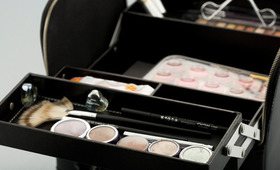
Building Your Kit
Building Your Kit Part 2: It's in the Bag!
- 3995
-

Community
Halloween Special! 25 Best Zombie Makeup Looks
- 339
-

outFit with Kit
The Perfect Workout Playlist in 6 Steps
- 751
-

outFit with Kit
Body By Kit: High Butt, Happy Life
- 792
-
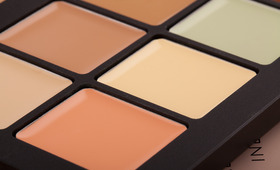
Building Your Kit
Building Your Kit Part 6: How to Choose and Use Concealers
- 3356




